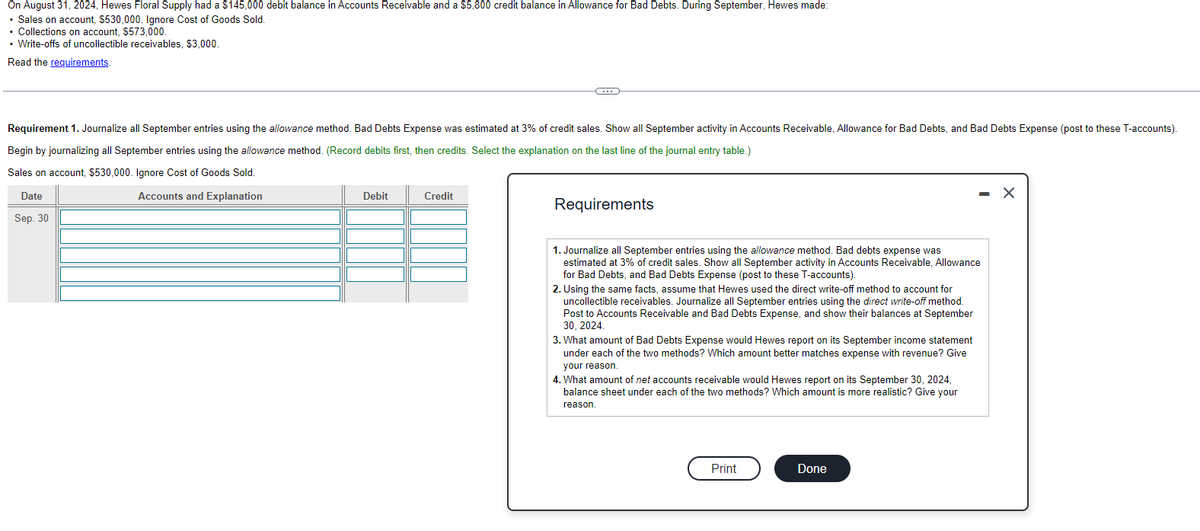On August 31, 2024, Hewes Floral Supply had a $145,000 debit balance in Accounts Receivable and a $5,800 credit balance in Allowance for Bad Debts. During September, Hewes made: • Sales on account, $530,000. Ignore Cost of Goods Sold. . Collections on account, $573,000. • Write-offs of uncollectible receivables, $3,000. Read the requirements. Requirement 1. Journalize all September entries using the allowance method. Bad Debts Expense was estimated at 3% of credit sales. Show all September activity in Accounts Receivable, Allowance for Bad Debts, and Bad Debts Expense (post to these T-accounts). Begin by journalizing all September entries using the allowance method. (Record debits first, then credits. Select the explanation on the last line of the journal entry table.) Sales on account, $530,000. Ignore Cost of Goods Sold. Accounts and Explanation Date Sep. 30 Debit Credit Requirements 1. Journalize all September entries using the allowance method. Bad debts expense was estimated at 3% of credit sales. Show all September activity in Accounts Receivable, Allowance for Bad Debts, and Bad Debts Expense (post to these T-accounts). 2. Using the same facts, assume that Hewes used the direct write-off method to account for uncollectible receivables. Journalize all September entries using the direct write-off method. Post to Accounts Receivable and Bad Debts Expense, and show their balances at September 30, 2024. 3. What amount of Bad Debts Expense would Hewes report on its September income statement under each of the two methods? Which amount better matches expense with revenue? Give your reason. 4. What amount of net accounts receivable would Hewes report on its September 30, 2024, balance sheet under each of the two methods? Which amount is more realistic? Give your reason. Print Done
Bad Debts
At the end of the accounting period, a financial statement is prepared by every company, then at that time while preparing the financial statement, the company determines among its total receivable amount how much portion of receivables is collected by the company during that accounting period.
Accounts Receivable
The word “account receivable” means the payment is yet to be made for the work that is already done. Generally, each and every business sells its goods and services either in cash or in credit. So, when the goods are sold on credit account receivable arise which means the company is going to get the payment from its customer to whom the goods are sold on credit. Usually, the credit period may be for a very short period of time and in some rare cases it takes a year.
Complete all of the requirements listed
accounting/econ

Trending now
This is a popular solution!
Step by step
Solved in 4 steps with 3 images









